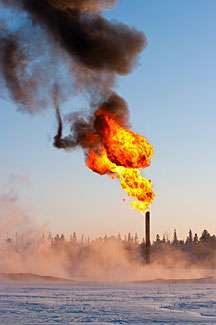Breaking down the impact of greenhouse gases

It's called the global warming potential or GWP for short and it bundles together the importance of carbon dioxide, methane, and other greenhouse gases on future climate change. Researchers from DOE's Pacific Northwest National Laboratory, working at the Joint Global Change Research Institute (JGCRI), found that increasing methane's ranking in the GWP made little difference on the overall outcome of climate change projections. JGCRI is a partnership between PNNL and the University of Maryland.
Carbon dioxide gets most of the press when it comes to greenhouse gas. So much so that it's used as a standard by which researchers and policy makers measure the global warming impact of all other greenhouse gases. Though not as abundant, methane, a gas released by oil drilling, landfills, and other industrial activities as well as by nature, is the second most important anthropogenic greenhouse gas and traps more heat in the atmosphere per pound than carbon dioxide.
Considering the shorter lifetime of methane in the atmosphere along with the fact that relatively inexpensive abatement technologies already exist, methane may be an easier emission reduction target. For these reasons, scientists wanted to know if they upped the ante on methane's importance, making it a bigger target for reduction, would it make a difference in climate change projections. The short answer—not that much.
Using the Global Change Assessment Model, an integrated model of the human and Earth system, the researchers found that the impact of changing the value of methane compared to carbon dioxide is relatively small. There are several reasons for this small sensitivity. First, the large amount of relatively low-cost available methane abatement options, which tend to be used in most cases; and second, the interaction between carbon dioxide and methane reductions within the integrated system show that when carbon dioxide is abated, methane is also reduced. This is because reductions in coal or natural gas burning from policies to lower carbon dioxide emissions also reduce methane emissions.
Finally, the team noted a third cost in changing the metric.
"The GWP index is already embedded in greenhouse gas targets, real-world policies in national and international climate change policy frameworks. Changing this value would have a transition cost, further reducing any benefit a change might provide," said Dr. Steven J. Smith, a senior scientist at JGCRI. "If society wants to reduce climate change, then the key for methane is to put in place incentives for reducing emissions. We found that the exact value placed on methane was less important."
Provided by US Department of Energy
















